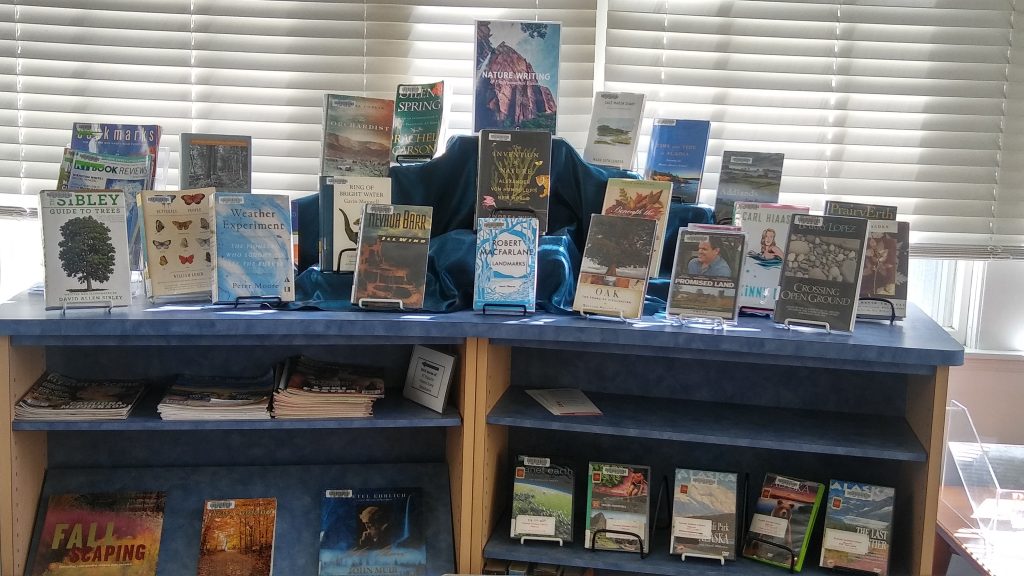
The Orchardist by Amanda Coplin
Set in the untamed American West, a highly original and haunting debut novel about a makeshift family whose dramatic lives are shaped by violence, love, and an indelible connection to the land.
Skinny Dip by Carl Hiaasen
Marine biologist Chaz Perrone can’t tell a sea horse from a sawhorse. And when he throws his beautiful wife, Joey, off a cruise liner, he really should know better. An expert swimmer, Joey makes her way to a floating bale of Jamaican pot-and then to an island inhabited by an ex-cop named Mick Stranahan, whose ex-wives include five waitresses and a TV producer. Now Joey wants to get revenge on Chaz and Mick’s happy to help her.But in swampy South Florida, separating lies from truths and stupidity from brilliance isn’t easy. Especially when you’re after a guy like Chaz-who’s bad at murder, great at fraud, and just terrible at getting caught
Ill Wind by Nevada Barr
Lately, visitors to Mesa Verde have been bringing home more than photos–they’re also carrying a strange, deadly disease. And once it strikes, park ranger Anna Pigeon must find the very human source of the evil wind.
Addlands: a novel by Tom Bullough
The patriarch of Funnon Farm is Idris Hamer, stubborn, strong, a man of the plough and the prayer-sheet, haunted by his youth in the trenches of France. The son is Oliver, a junior boxing champion and hell-raising local legend who seems from birth inextricably rooted to his corner of Wales. Bridging these two men’s uneasy relationship is Etty, a woman born into a world unequipped to deal with her. Following the Hamer family for seventy years, this novel’s beauty is in its pure and moving prose, and its brilliant insight into a traditional way of life splintering in the face of inevitable change. Addlands is also a tale of blood feuds and momentous revelations, of the great dramas that simmer beneath the surface of the everyday. Through all the upheavals of the twentieth century, the only constant is the living presence of the land itself, a dazzling, harsh, and haunting terrain that Tom Bullough conjures with the skill and grace of a master.
Fallscaping: Extending Your Garden Season into Autumn by Nancy J. Ondra
Embrace the jewel-toned fruits, flaming foliage, and woody plants of the fall garden. Landscape designers Nancy J. Ondra and Stephanie Cohen offer practical design ideas, plant advice, and 10 complete garden plans in this autumnal gardening guide. Ondra and Cohen’s expertise is complemented by stunning color photographs that illustrate the beauty and variety of this often overlooked gardening season. You’ll be inspired to use vines, tree shrubs, and flowers to contribute color, texture, and beauty to your garden well past summer’s peak.
Stepping Back to Look Forward: A History of the Massachusetts Forest by Charles H. W. Foster
This timely collection of essays – written by nine recognized forestry and environmental specialists – tells the story of the conservation, use, and changes in the Commonwealth’s forests over time. The book traces the development of pre-settlement, colonial, and post-Revolutionary War forest practices, and concludes with recommendations as to how history might be used to inform and shape future policy. Underscored is the importance of private and local leadership, such as the unique Massachusetts town forest movement. Economic contributions and educational programs are detailed, as well as the ways Massachusetts’ leadership has influenced national forestry. Written for the layperson, and reflecting the particular experience and style of each contributor, the history will appeal to a range of readers from local conservation activists to forestry professionals and policymakers.
John of the Mountains: The Unpublished Journals of John Muir. Edited by Linnie Marsh Wolfe
John Muir, America’s pioneer conservationist and father of the national park system, was a man of considerable literary talent. As he explored the wilderness of the western part of the United States for decades, he carried notebooks with him, narrating his wanderings, describing what he saw, and recording his scientific researches. This reprint of his journals, edited by Linnie Marsh Wolfe in 1938 and long out of print, offers an intimate picture of Muir and his activities during a long and productive period of his life.
Crossing Open Ground by Barry Lopez.
The author travels through the American Southwest and Alaska, discussing endangered wildlife and forgotten cultures.
Home Ground: Language for an American Landscape by Barry Lopez
Barry Lopez asked 45 poets and writers to define terms that describe America’s land and water forms — phrases like flatiron, bayou, monadnock, kiss tank, meander bar, and everglade. The result is a major enterprise comprising over 850 descriptions, 100 line drawings, and 70 quotations from works by Willa Cather, Truman Capote, John Updike, Cormac McCarthy, and others. Carefully researched and exquisitely written by talents such as Barbara Kingsolver, Lan Samantha Chang, Robert Hass, Terry Tempest Williams, Jon Krakauer, Gretel Ehrlich, Luis Alberto Urrea, Antonya Nelson, Charles Frazier, Linda Hogan, and Bill McKibben, Home Ground is a striking composite portrait of the landscape. At the heart of this expansive work is a community of writers in service to their country, emphasizing a language that suggests the vastness and mystery that lie beyond our everyday words.
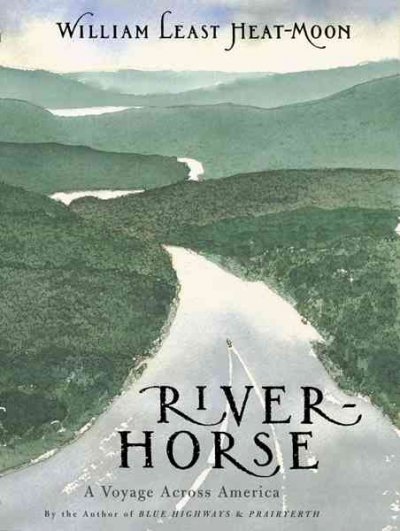
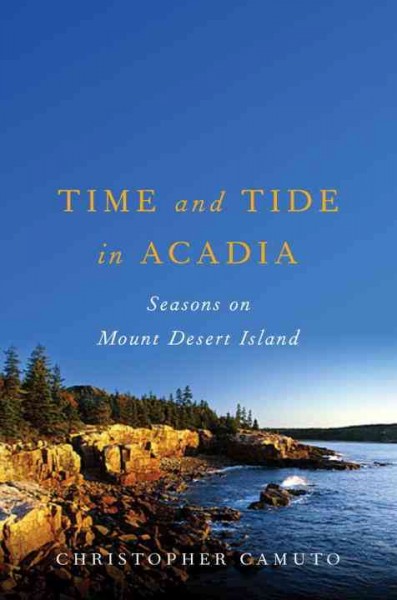
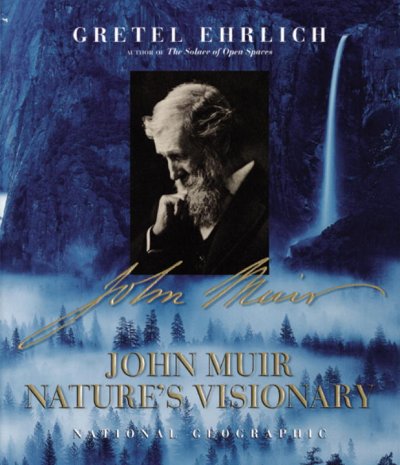
PrairyErth by William Least Heat-Moon
Robert Penn Warren pronounced Heat-Moon’s Blue Highways “a masterpiece.” Now Heat-Moon has pulled to the side of the road and set off on foot to take readers on an exploration of time and space, landscape and history in the Flint Hills of central Kansas.
River-Horse: The Logbook of a Boat Across America by William Least Heat-Moon.
Since hitting the American roads in Blue Highways nearly 20 years ago, William Least Heat-Moon has been following another calling–to traverse America by its rivers. “I wanted to see those secret parts hidden from road travelers,” he writes. And from the waterways of his 5,000-mile voyage, Least Heat-Moon shares a sharp and stirring vision of America. Filling a small bottle with brine from the Atlantic Ocean, Least Heat-Moon and his wise companion, whom he calls “Pilotis,” start up the Hudson River in a 22-foot C-Dory that Least Heat-Moon has named Nikawa–from the Osage words ni for river and kawa for horse. The voyage–from New York harbor to the Pacific Ocean
Time and Tide in Acadia: Seasons on Mount Desert Island by Christopher Camuto.
Mount Desert Island and Acadia National Park have been described as the climax of the coast of Maine. Millions are drawn every year to the stunning beauty of this rocky landscape of spruce-fir forest and granite islands. Some, like nature writer Christopher Camuto, never stop coming back. In Time and Tide in Acadia the author draws on years of walking Mount Desert’s summits and shorelines, canoeing its marshes, kayaking its tidal waters, and visiting its outer islands. To this task Camuto brings an appetite for observing wildlife and landscape with considerable originality, a regard for history and indigenous perceptions of nature, a keen interest in exploring the psychological and philosophical appeal of nature, and a writer’s love of language. As in his previous, highly praised books, Camuto fulfills his promise to give the reader innumerable vantages on the nature of a remarkable place that it takes time to get to know.
John Muir: Nature’s Visionary by Gretel Ehrlich.
Emigrating from Scotland as an eleven-year-old in 1849, John Muir spent a harsh boyhood working on his family’s farm in Wisconsin. After a factory accident in his early twenties left him temporarily blind, Muir left behind what he saw as the degradations of cities and farms and set out for unspoiled territory. And the rest, as they say, is ecological and conservation history.The untouched lands of the Sierra Nevada, which he christened the “Range of Light”, became Muir’s lifelong passion. As the nation’s most revered spokesman for the wilderness and a founder of the Sierra Club, Muir made immeasurable contributions to the beauty and preservation of our continent. And this exquisite book captures as never before the extraordinary nature of his life. Prize-winning photographer Lynn Johnson brings the matchless vitality of this bearded warrior to thrilling life. The visual odyssey is further enriched by reproductions of Muir’s own drawings as well as the rarely seen and recently rediscovered images of Carleton Watkins. Showcasing its legendary subject’s own rhapsodic writings, John Muir: Nature’s Visionary bears powerful witness to Muir’s enduring contributions to the American landscape.
Ring of Bright Water by Maxwell, Gavin
Hailed a masterpiece when it was first published, the story of Gavin Maxwell’s life with otters on the remote west coast of Scotland remains one of the most lyrical, moving descriptions of a man’s relationship with the natural world. “”One of the outstanding wildlife books of all time.””-New York Herald Tribune First published 1960 by Longmans, Green & Co.
Never Cry Wolf by Farley Mowat.
More than a half-century ago the naturalist Farley Mowat to investigate why wolves were killing arctic caribou. Mowat’s account of the summer he lived in the frozen tundra alone — studying the wolf population and developing a deep affection for the wolves (who were of no threat to caribou or man) — is today celebrated as a classic of nature writing, at once a tale of remarkable adventures and indelible record of myths and magic of wolves.
Desert Solitaire: A Season in the Wilderness by Edward Abbey
When Desert Solitaire was first published in 1968, it became the focus of a nationwide cult. Rude and sensitive. Thought-provoking and mystical. Angry and loving. Both Abbey and this book are all of these and more. Here, the legendary author of The Monkey Wrench Gang, Abbey’s Road and many other critically acclaimed books vividly captures the essence of his life during three seasons as a park ranger in southeastern Utah. This is a rare view of a quest to experience nature in its purest form — the silence, the struggle, the overwhelming beauty. But this is also the gripping, anguished cry of a man of character who challenges the growing exploitation of the wilderness by oil and mining interests, as well as by the tourist industry.
The Quiet World: Saving Alaska’s Wilderness Kingdom, 1879-1960 by Douglas Brinkley.
In this fascinating follow-up to his New York Times bestseller Wilderness Warrior, acclaimed historian Douglas Brinkley offers a riveting, expansive look at the past and present battle to preserve Alaska’s wilderness. Brinkley explores the colorful diversity of Alaska’s wildlife, arrays the forces that have wreaked havoc on its primeval arctic refuge—from Klondike Gold Rush prospectors to environmental disasters like the Exxon-Valdez oil spill—and documents environmental heroes from Theodore Roosevelt to Dwight Eisenhower and beyond. Not merely a record of Alaska’s past, Quiet World is a compelling call-to-arms for sustainability, conservationism, and conscientious environmental stewardship—a warning that the land once called Seward’s Folly may go down in history as America’s Greatest Mistake.
Cultivating Delight: Natural History of My Garden by Diane Ackerman.
The author takes readers deep into her own garden, mixing science with lyrical writing to offer a sensory celebration of her encounter with the natural world.
Walden by Henry David Thoreau
Walden, or, Life in the Woods, is an American book written by noted transcendentalist Henry David Thoreau. The work is part personal declaration of independence, social experiment, voyage of spiritual discovery, satire, and manual for self-reliance. Published in 1854, it details Thoreau’s experiences over the course of two years in a cabin he built near Walden Pond, amid woodland owned by his friend and mentor Ralph Waldo Emerson, near Concord, Massachusetts.
The Maine Woods by Henry David Thoreau
The Maine Woods is classic Thoreau: a personal story of exterior and interior discoveries in a natural setting–all conveyed in taut, masterly prose. Thoreau’s evocative renderings of the life of the primitive forest–its mountains, waterways, fauna, flora, and inhabitants–are timeless and valuable on their own. But his impassioned protest against the despoilment of nature in the name of commerce and sport, which even by the 1850s threatened to deprive Americans of the “tonic of wildness,” makes The Maine Woods an especially vital book for our own time.
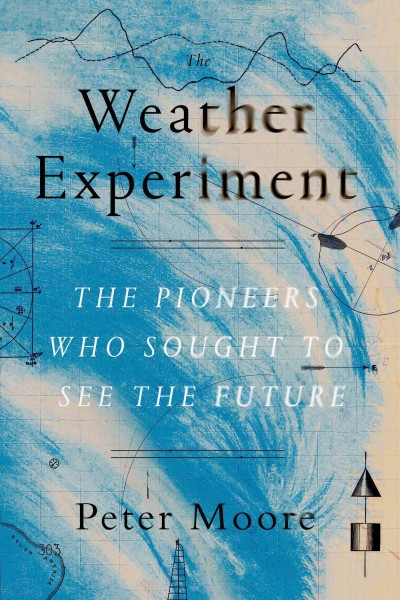
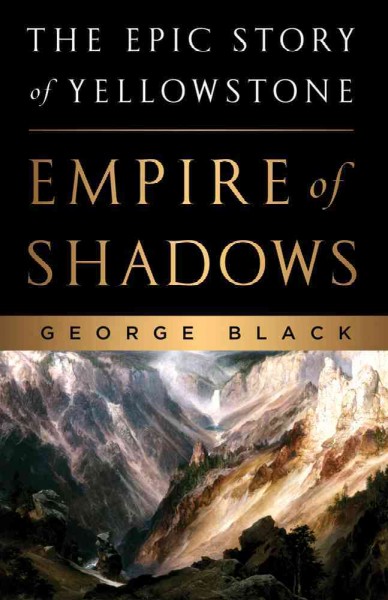
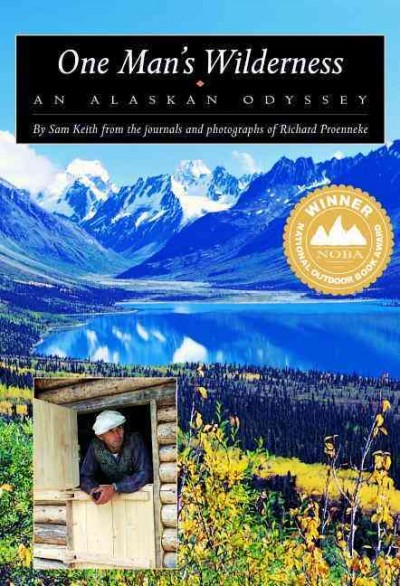
The Weather Experiment: The Pioneers Who Sought to See the Future by Peter Moore.
In an age when a storm at sea was evidence of God’s wrath, nineteenth-century meteorologists had to fight against convention and religious dogma. Buoyed by the achievements of the Enlightenment, a generation of mavericks set out to decipher the secrets of the atmosphere and predict the future. Among them were Luke Howard, the first to classify clouds; Francis Beaufort, who quantified the winds; James Glaisher, who explored the upper atmosphere in a hot-air balloon; Samuel Morse, whose electric telegraph gave scientists the means by which to transmit weather warnings; and FitzRoy himself, master sailor, scientific pioneer, and founder of the U.K.’s national weather service.
Empire of Shadows: The Epic Story of Yellowstone by George Black.
Empire of Shadows is the epic story of the conquest of Yellowstone, a landscape uninhabited, inaccessible and shrouded in myth in the aftermath of the Civil War. In a radical reinterpretation of the nineteenth-century West, George Black casts Yellowstone’s creation as the culmination of three interwoven strands of history – the passion for exploration, the violence of the Indian Wars and the “civilizing” of the frontier – and charts its course through the lives of those who sought to lay bare its mysteries: Lt. Gustavus Cheyney Doane, a gifted but tormented cavalryman known as “the man who invented Wonderland”; the ambitious former vigilante leader Nathaniel Langford; scientist Ferdinand Hayden, who brought photographer William Henry Jackson and painter Thomas Moran to Yellowstone; and Gen. Phil Sheridan, Civil War hero and architect of the Indian Wars, who finally succeeded in having the new National Park placed under the protection of the US Cavalry. George Black’s Empire of Shadows is a groundbreaking historical account of the origins of America’s majestic national landmark.
One Man’s Wilderness: An Alaskan Odyssey by Richard Proenneke.
To live in a pristine land unchanged by man…to roam a wilderness through which few other humans have passed…to choose an idyllic site, cut trees and build a log cabin…to be a self-sufficient craftsman, making what is needed from materials available…to be not at odds with the world but content with one’s own thoughts and company. Thousands have had such dreams, but Richard Proenneke lived them. He found a place, built a cabin, and stayed to become part of the country. One Man’s Wilderness is a simple account of the day-to-day explorations and activities he carried out alone, and the constant chain of nature’s events that kept him company. From Proenneke’s journals, and with first-hand knowledge of his subject and the setting, Sam Keith has woven a tribute to a man who carved his masterpiece out of the beyond.
The Old Ways: A Journey On Foot by Robert Macfarlane.
Told in Macfarlane’s distinctive voice, The Old Ways folds together natural history, cartography, geology, archaeology and literature. His walks take him from the chalk downs of England to the bird islands of the Scottish northwest, from Palestine to the sacred landscapes of Spain and the Himalayas. Along the way he crosses paths with walkers of many kinds — wanderers, pilgrims, guides, and artists. Above all this is a book about walking as a journey inward and the subtle ways we are shaped by the landscapes through which we move. Macfarlane discovers that paths offer not just a means of traversing space, but of feeling, knowing, and thinking.
Landmarks by Robert Macfarlane
Words are grained into our landscapes, and landscapes are grained into our words. Landmarks is about the power of language to shape our sense of place. It is a field guide to the literature of nature, and a glossary containing thousands of remarkable words used in England, Scotland, Ireland and Wales to describe land, nature and weather. Travelling from Cumbria to the Cairngorms, and exploring the landscapes of Roger Deakin, J. A. Baker, Nan Shepherd and others, Robert Macfarlane shows that language, well used, is a keen way of knowing landscape, and a vital means of coming to love it.
The Wilderness Warrior: Theodore Roosevelt and the Crusade for America by Douglas Brinkley.
In this groundbreaking epic biography, Douglas Brinkley draws on never-before-published materials to examine the life and achievements of our “naturalist president.” By setting aside more than 230 million acres of wild America for posterity between 1901 and 1909, Theodore Roosevelt made conservation a universal endeavor. This crusade for the American wilderness was perhaps the greatest U.S. presidential initiative between the Civil War and World War I. Roosevelt’s most important legacies led to the creation of the U.S. Fish and Wildlife Service and passage of the Antiquities Act in 1906. His executive orders saved such treasures as Devils Tower, the Grand Canyon, and the Petrified Forest.
My First Summer in the Sierra by John Muir
In the summer of 1869, John Muir, a young Scottish immigrant, joined a crew of shepherds in the foothills of California’s Sierra Nevada Mountains. The diary he kept while tending sheep formed the heart of this book and eventually lured thousands of Americans to visit Yosemite country. First published in 1911, My First Summer in the Sierra incorporates the lyrical accounts and sketches he produced during his four-month stay in the Yosemite River Valley and the High Sierra. His record tracks that memorable experience, describing in picturesque terms the majestic vistas, flora and fauna, and other breathtaking natural wonders of the area. Today Muir is recognized as one of the most important and influential naturalists and nature writers in America. This book, the most popular of the author’s works, will delight environmentalists and nature lovers with its exuberant observations.
Steep Trails; California, Utah, Nevada, Washington, Oregon, the Grand Canon. by John Muir
The papers brought together in this volume have, in a general way, been arranged in chronological sequence. They span a period of twenty-nine years of Muir’s life, during which they appeared as letters and articles, for the most part in publications of limited and local circulation. The Utah and Nevada sketches, and the two San Gabriel papers, were contributed, in the form of letters, to the San Francisco Evening Bulletin toward the end of the seventies. Written in the field, they preserve the freshness of the author’s first impressions of those regions. Much of the material in the chapters on Mount Shasta first took similar shape in 1874. Subsequently it was rewritten and much expanded for inclusion in Picturesque California, and the Region West of the Rocky Mountains, which Muir began to edit in 1888. In the same work appeared the description of Washington and Oregon. The charming little essay “Wild Wool” was written for the Overland Monthly in 1875. “A Geologist’s Winter Walk” is an extract from a letter to a friend, who, appreciating its fine literary quality, took the responsibility of sending it to the Overland Monthly without the author’s knowledge. The concluding chapter on “The Grand Canyon of the Colorado” was published in the Century Magazine in 1902, and exhibits Muir’s powers of description at their maturity.
Travels in Alaska, by John Muir
In the late 1800s, John Muir made several trips to the pristine, relatively unexplored territory of Alaska, irresistibly drawn to its awe-inspiring glaciers and its wild menagerie of bears, bald eagles, wolves, and whales. Half-poet and half-geologist, he recorded his experiences and reflections in Travels in Alaska, a work he was in the process of completing at the time of his death in 1914. As Edward Hoagland writes in his Introduction, “A century and a quarter later, we are reading [Muir’s] account because there in the glorious fiords . . . he is at our elbow, nudging us along, prompting us to understand that heaven is on earth—is the Earth—and rapture is the sensible response wherever a clear line of sight remains.”
Silent Spring by Rachel Carson
Rachel Carson’s Silent Spring was first published in three serialized excerpts in the New Yorker in June of 1962. The book appeared in September of that year and the outcry that followed its publication forced the banning of DDT and spurred revolutionary changes in the laws affecting our air, land, and water. Carson’s passionate concern for the future of our planet reverberated powerfully throughout the world, and her eloquent book was instrumental in launching the environmental movement. It is without question one of the landmark books of the twentieth century.
The Outermost House; A Year of Life on the Great Beach of Cape Cod by Henry Beston
A chronicle of a solitary year spent on a Cape Cod beach, The Outermost House has long been recognized as a classic of American nature writing. Henry Beston had originally planned to spend just two weeks in his seaside home, but was so possessed by the mysterious beauty of his surroundings that he found he “could not go.”
The St. Lawrence, by Henry Beston
Vast watercourse, boundary, and the gateway to North America–the St. Lawrence River has been an integral player in the formation of Canada as we know it today. But as writer and naturalist Henry Beston reminds us, this great passageway carries much more than historical significance to the wildlife of its waters and banks. Travelling along the river more than 70 years ago, Beston expertly observed its natural environment as he researched the greatest survey of the land and its people that had yet been written.
Oak: The Frame of Civilization by William Bryant Logan
Professional arborist and award-winning nature writer William Bryant Logan deftly relates the delightful history of the reciprocal relationship between humans and oak trees since time immemorial—a profound link that has almost been forgotten. From the ink of Bach’s cantatas, to the first boat to reach the New World, to the wagon, the barrel, and the sword, oak trees have been a constant presence throughout our history. In fact, civilization prospered where oaks grew, and for centuries these supremely adaptable, generous trees have supported humankind in nearly every facet of life.
The Plant Explorer’s Guide to New England by Raymond Wiggers
Discover the Northeasts rich legacy of botany, ecology and horticulture. With a delightful mix of Thoreauvian reflection and good old Yankee humor, the author leads adventurers on 54 illustrated driving and walking tours. A very handy road trip guide and gives specific sites and seasons for seeing Northeastern plants in all of their glory. Covering Maine to Connecticut. The maps are easy to follow if you have a nice state route and the text is informative. Pack this in your car with your plant id guides for a long weekend drive.
The Sibley Guide to Trees by David Allen Sibley
David Allen Sibley, the preeminent bird-guide author and illustrator, now applies his formidable skills of identification and illustration to the trees of North America. Monumental in scope but small enough to take into the field, The Sibley Guide to Trees is an astonishingly elegant guide to a complex subject. It condenses a huge amount of information about tree identification—more than has ever been collected in a single book—into a logical, accessible, easy-to-use format.
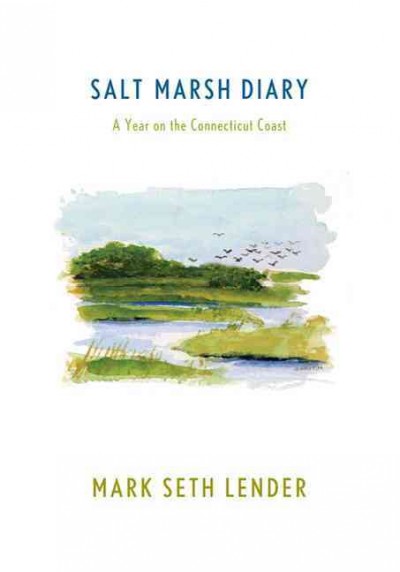
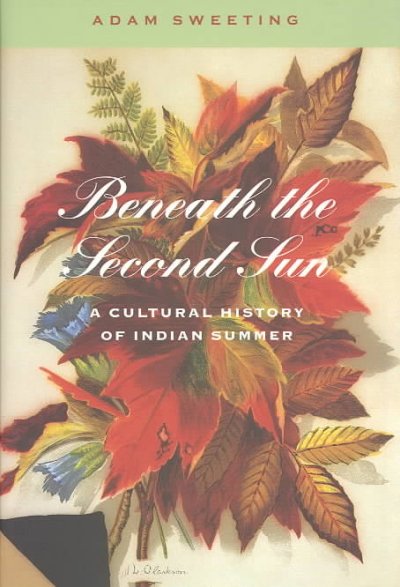
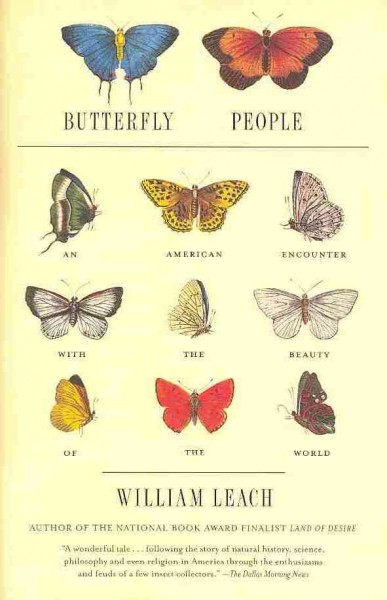
Salt Marsh Diary: A Year on the Connecticut Coast by Mark Seth Lender.
Mark Seth Lender’s home is on the edge of a salt marsh. From his front porch and back yard he is witness to an astonishing array of wildlife, but nothing he sees is more beautiful and inspiring than the birds that fill the air, perch on trees and wade in shallow water. His reports on the sighting of birds like great horned owls, little blue herons and snowy egrets are featured in the segment “Salt Marsh Diary” heard on NPR’s Living on Earth. For the first time, he has chronicled the marsh’s life in a book penned from his perch. With the soul of a poet and the precision of a naturalist, Lender transports the reader to the edge of his salt marsh and makes us both see and hear kingfishers, terns, bluebirds, egrets and other wonders that fill the sky above us.
Beneath the Second Sun: A Cultural History of Indian Summer by Adam Sweeting.
Indian summer, the succession of warm, fair days gracing New England in autumn, is a magical period signaling the end of fall, a meteorological event, and a literary metaphor. In this appealing book, Adam Sweeting plumbs Indian summer’s use in literature as a symbol of second chance, rebirth, or reprieve before the onset of a harsher season. Sweeting focuses specifically on how New England writers have interpreted this seasonal phenomenon. Mining the works of popular authors including John Greenleaf Whittier, Francis Parkman, Oliver Wendell Holmes, and, especlaily, Henry David Thoreau, Emily Dickinson, and William Dean Howells, Sweeting demonstrates myriad ways in which the season has become inscribed in American culture. Within the context of modern American studies, Sweeting’s study is part of a post-modern scholarly discussion of how tangible realities such as climate are mediated, even forged, by social needs. Sweeting’s graceful, lively, and accessible style beckons not only scholars of American literature and the nineteenth century but any traveler seeking the glories of autumn in New England.
Butterfly People: An American Encounter With the Beauty of the World by William R. Leach
A product of William Leach’s lifelong love of butterflies, this engaging and elegantly illustrated history shows how Americans from all walks of life passionately pursued butterflies, and how through their discoveries and observations they transformed the character of natural history. Leach focuses on the correspondence and scientific writings of half a dozen pioneering lepidopterists who traveled across the country and throughout the world, collecting and studying unknown and exotic species. In a book as full of life as the subjects themselves and foregrounding a collecting culture now on the brink of vanishing, Leach reveals how the beauty of butterflies led Americans into a deeper understanding of the natural world. He shows, too, that the country’s enthusiasm for butterflies occurred at the very moment that another form of beauty—the technological and industrial objects being displayed at world’s fairs and commercial shows—was emerging, and that Americans’ attraction to this new beauty would eventually, and at great cost, take precedence over nature in general and butterflies in particular.
Riverine: A Memoir from Anywhere But Here by Angela Palm
Angela Palm grew up in a place not marked on the map, her house set on the banks of a river that had been straightened to make way for farmland. Every year, the Kankakee River in rural Indiana flooded and returned to its old course while the residents sandbagged their homes against the rising water. From her bedroom window, Palm watched the neighbor boy and loved him in secret, imagining a life with him even as she longed for a future that held more than a job at the neighborhood bar. For Palm, caught in this landscape of flood and drought, escape was a continually receding hope.
Promised Land [videorecording]
Corporate salesman Steve Butler has been dispatched to the rural town of McKinley with his sales partner to offer much-needed relief to the economically hard-hit residents in exchange for drilling rights to their properties. As they grapple with a surprising array of both open hearts and closed doors, the outsiders soon discover the strength of an American small town at a crossroads.
Denali Park Alaska [videorecording]
Alaska, the Best of the Last Frontier [videorecording]
Alaska the Last Frontier [videorecording]
Planet Earth [videorecording]
Amazon Adventures [videorecording]
For more titles come to the library and see our Nature Writing display
